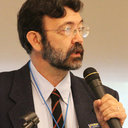Risk perception and social participation among women exposed to manganese in the mining district of the state of Hidalgo, Mexico.
Maneno muhimu
Kikemikali
OBJECTIVE
To analyze the importance attributed to manganese (Mn) in the health-disease-death process and possibilities for participation in risk management of women from two communities who live near the plant in the Molango mining district.
METHODS
Qualitative study based on 6 focus groups with women of different ages. Audio recordings were made of the sessions, after verbal informed consent, and were transcribed with a word processor. The analysis was conducted according to theme, taking into account the age group and community to which the women belonged, using the Atlas-ti (v.5.0) program.
RESULTS
The youngest women from Chiconcoac attribute the cause of headaches and chest pain to manganese, while women from the Tolago community believe it exacerbates disease in general. Women between 31 and 40 years old from Chiconcoac attribute the cause of "brain" pain, burning eyes and coughs to manganese, and those in Tolago report that it causes memory problems. The oldest women in Tolago believe Mn causes learning difficulties and affects children's growth and development. The women of all ages in Tolago believe that Mn has decreased the production of fruit and vegetables in the region. Some of the obstacles to participation in risk management are: women are not allowed to attend meetings at which men discuss the Mn problem and they perceive the mine as a source of employment for the community.
CONCLUSIONS
The women perceive Mn to have serious effects on health and the local environment and have fewer opportunities than men to participate in risk management. Some of the health consequences attributed to Mn are consistent with those reported by neurological studies, nevertheless, other risks are overestimated. Spaces for communication need to be created to listen to the women's interests and concerns and empower them to participate in the risk management plan.


